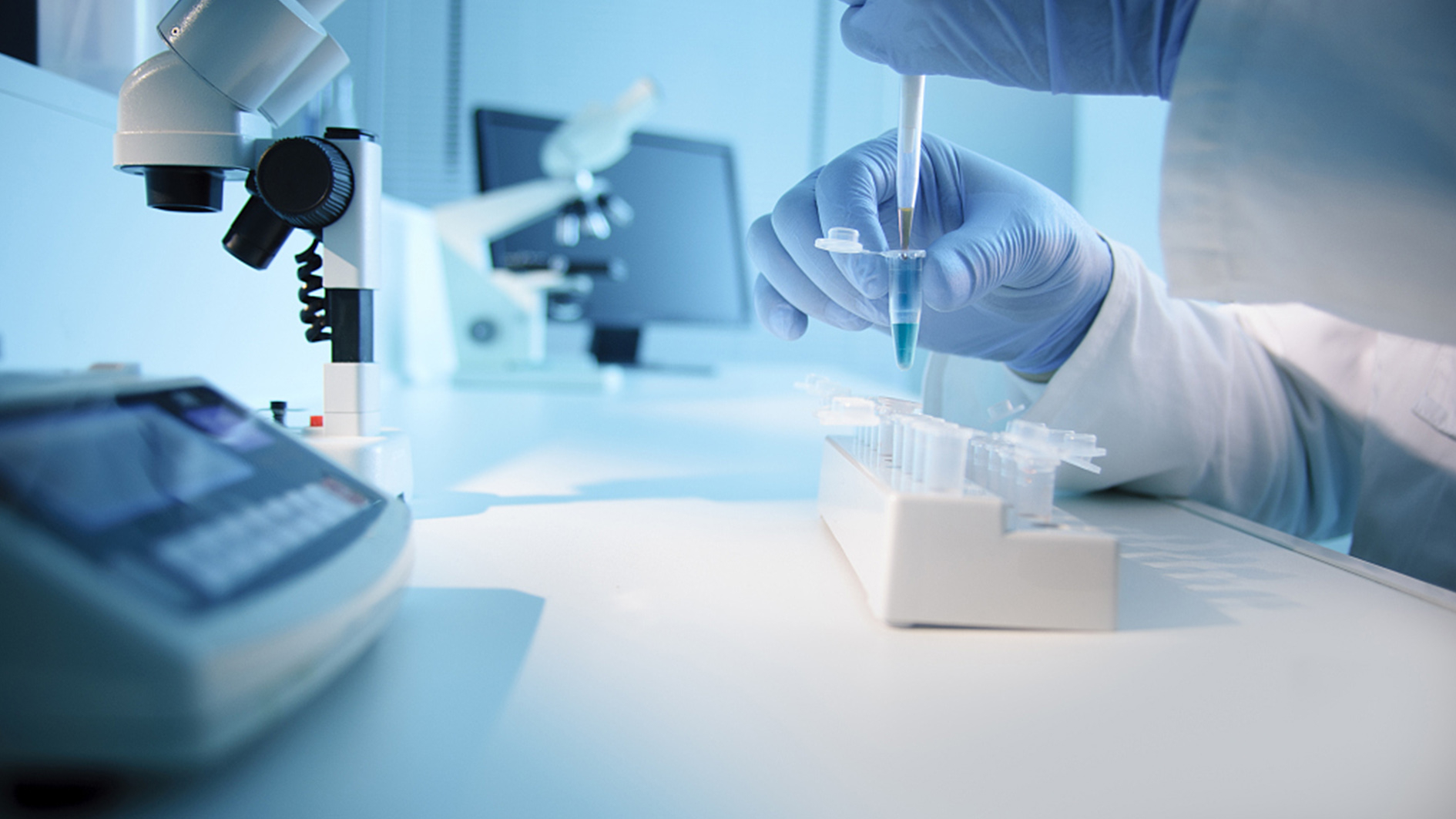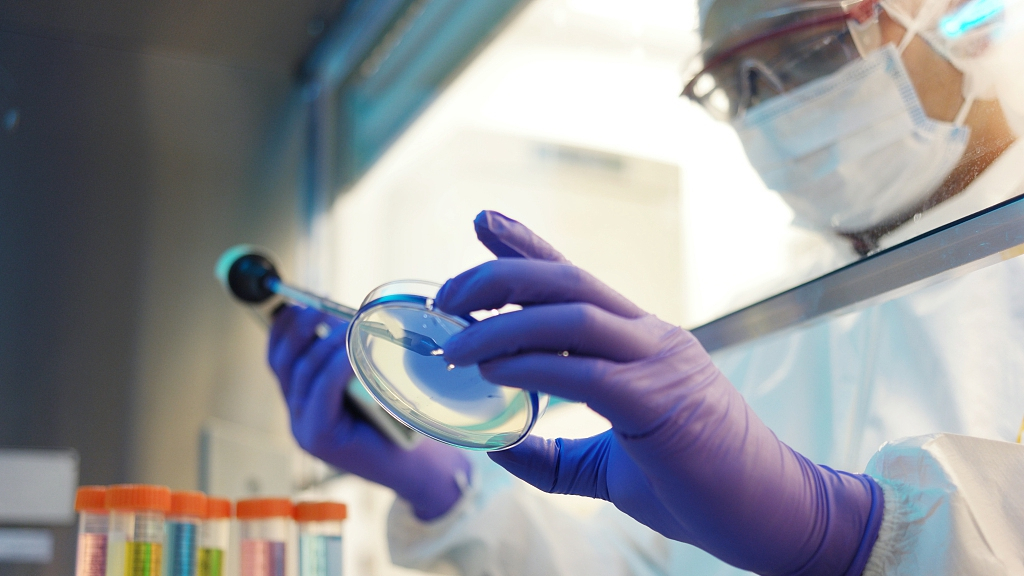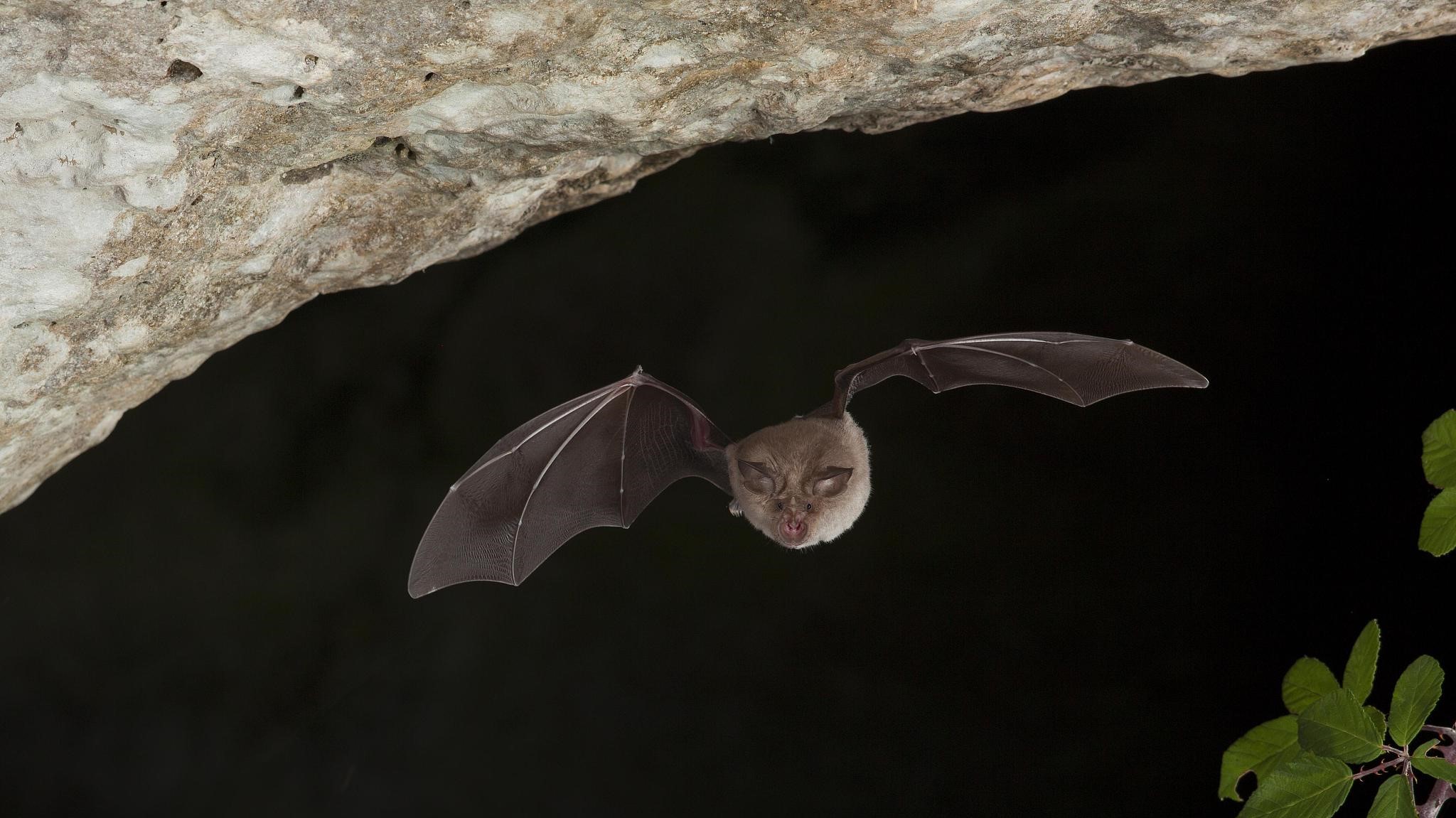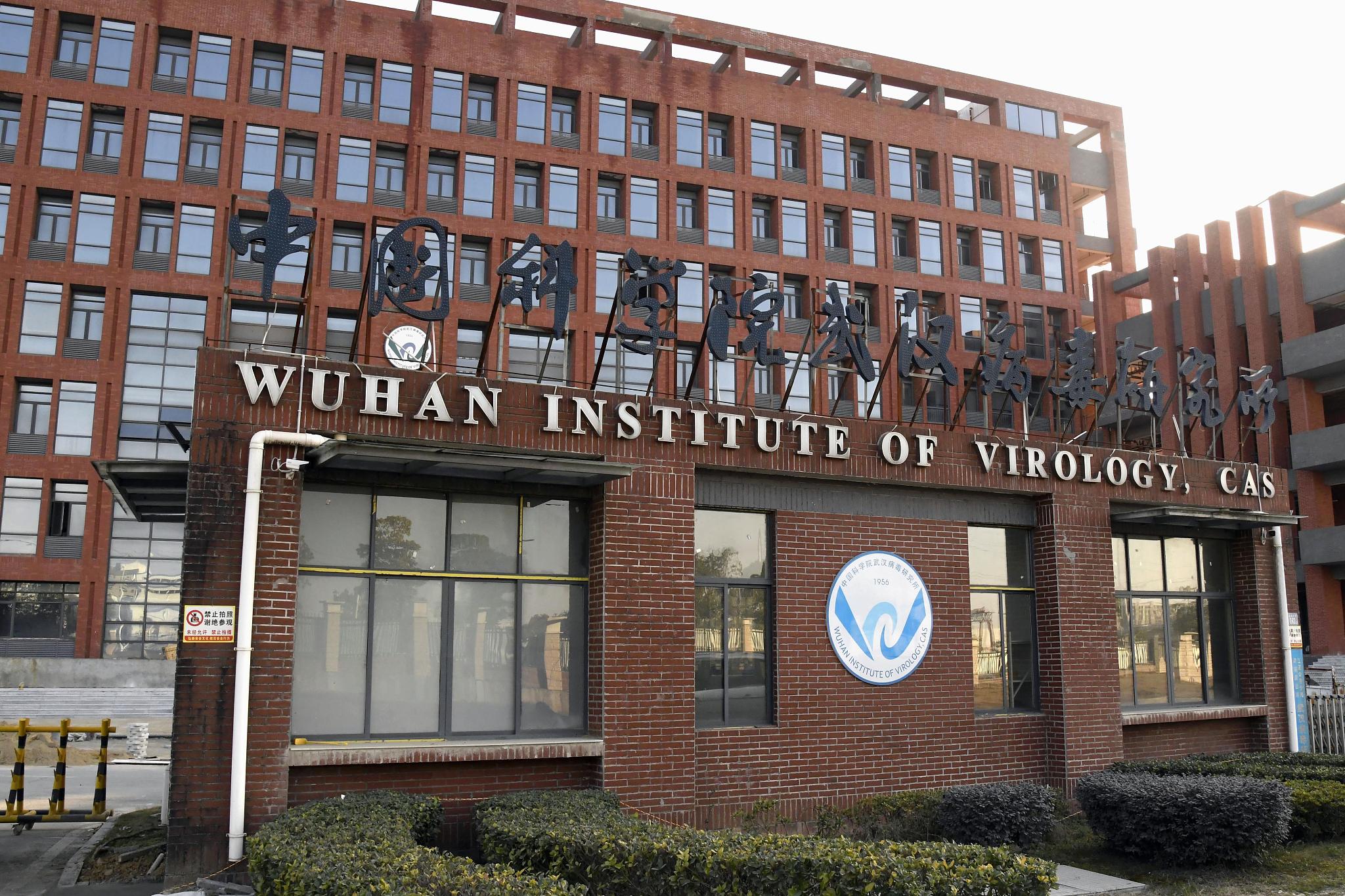
Editor's note: Jeffrey D. Sachs, University Professor at Columbia University, is Director of the Center for Sustainable Development at Columbia University and President of the UN Sustainable Development Solutions Network. The article reflects the author's opinions and not necessarily the views of CGTN.
Where did COVID-19 come from? The source of the pandemic is a subject of immense importance. But more than 18 months after the emergence of SARS-CoV-2 (the virus that causes COVID-19), the question of the pathogen's origin remains unsettled. More transparency and clarity on the debate could help to resolve the source of the virus and also head off future pandemics.
There are two main hypotheses. The first is a natural occurrence in which SARS-CoV-2 passed from an animal to a human in a natural setting, a farm, or a food market. The second is an infection related to research work that was underway on SARS-like viruses (that is, viruses related to the virus that caused the SARS epidemic in 2002-04). If we are to prevent future outbreaks, determining the source of the current one must be a high priority.
The two hypotheses direct our attention to two different sets of concerns and policy measures, both of which require our attention. Diseases that emerge from the transmission of viruses from wildlife to humans (so-called natural zoonoses) call for precautionary measures in human interactions with animal reservoirs of potentially deadly pathogens, for example in land-clearing, farming, consumption of bushmeat, and rearing and trade of livestock. Natural zoonotic events have caused many deadly epidemic diseases in recent decades, including HIV/AIDS, Ebola, SARS, and MERS.
Emerging infectious diseases can also arise in the course of research on viruses and other pathogens. History records cases of scientists and laboratory workers being infected by pathogens they were studying. In the case of SARS-CoV-2, a research-related infection could have occurred in many ways. A researcher might have become infected while collecting samples of viruses and viral particles in natural habitats of horseshoe bats or other animals that may have harbored the virus.
Or an infection may have occurred in a laboratory where scientists were working with previously collected virus-containing samples or virus isolates. Another, related scenario involves infection of research personnel with viruses collected from a natural source and subsequently genetically manipulated in the laboratory, including changes that might make a bat-origin virus more likely to infect humans.
Both hypotheses – natural zoonosis and research-related infection – are viable at this stage of the investigation. Those who have claimed that a natural origin is the only viable hypothesis overlook the extensive research activity that was underway in the field and in laboratories on SARS-like viruses, including in Wuhan, China, and in the United States. Those who claim that a research-related infection is the only viable hypothesis overlook the frequency of natural zoonotic transmissions of viruses, such as the SARS outbreak.
There are many ways that a natural event could have occurred with SARS-CoV-2 somewhere in China and then been brought to Wuhan by an infected individual or an animal brought to market. And much confusion has resulted from conflating a research-origin hypothesis with a particular version of this hypothesis, in which the infection occurred following targeted manipulation of the virus to enhance its human adaptation.
Since the start of the pandemic, proponents of each hypothesis have made exaggerated, premature, and unjustified claims. Early in the epidemic, several scientists declared that there was overwhelming evidence that SARS-CoV-2 originated in wildlife and that alternative theories of a research-related release of the virus amounted to "conspiracy theories." Other early observers, followed by several U.S. politicians including former President Donald Trump, former Secretary of State Mike Pompeo, and members of Congress, claimed that there was enormous evidence of a laboratory release of the virus, pointing to the research activities underway in laboratories in Wuhan.

The state of the debate
Some scientists noted early on that both hypotheses were plausible. The subsequent research into the origin of COVID-19 has so far proved to be inconclusive, not only keeping both major hypotheses alive, but also undermining strident claims by some representatives of the two main camps. Originally, there was some hope that the SARS-CoV-2 genome itself would quickly reveal the origin of the virus, either by finding a nearly identical virus in nature (such as in a horseshoe bat or in an intermediate host such as a pangolin) or by proving definitively that the virus had undergone genetic manipulation in a laboratory setting.
Those hopes for a clear and quick resolution of the debate have not materialized. The SARS-CoV-2 genome is consistent with either a natural occurrence or a research-related occurrence. This is clearly the case if a researcher was infected while collecting virus samples in the field, because the virus would have arisen directly from nature, but the origin would still be research-related. To add to the complexity, the field researcher might have had a mild or asymptomatic case, so that even the researcher and his or her colleagues were unaware of the infection from the field, and that it was now being transmitted directly to other humans.
On the other hand, the SARS-CoV-2 genome displays no conclusive "genomic fingerprint" of artificial manipulation, such as a clear recombination of genetic material that would have been impossible in a natural setting.
For their part, proponents of the view that SARS-CoV-2 arose from a natural zoonotic event hoped that the animal harboring SARS-CoV-2 might be quickly identified, for example, on farms or in wet markets, or that the virus would be found directly in horseshoe bats. This hope, too, has so far failed to materialize, though of course it still might. Such discoveries often occur many years after an initial outbreak. But the fact remains that scientists have not yet identified a bat reservoir or intermediate mammalian host that may have served as the natural reservoir of the virus.
Nonetheless, there are some very important and concerning facts that have arisen during the first year and a half of the epidemic that bear heavily on its origin. The public and policy community have become increasingly aware of the intensive research on SARS-like viruses that was underway in the U.S., China, and elsewhere, both in collecting viral samples from the field and in studying their infectivity and pathogenicity (ability to cause disease) in the laboratory. We have learned that much of this work can be classified as "gain of function" (GoF) research.
This generic term involves modifying viruses to acquire new biological functions, and particular attention has been focused on so-called GoF Research of Concern (GOFROC), a category that includes research that may enhance the human transmissibility and/or pathogenicity of potential pandemic pathogens. Experiments at the Wuhan Institute of Virology (WIV) involving the modification of bat-origin coronaviruses to express proteins that are likely to enhance entry into human cells are viewed by many scientists as falling squarely into the category of GOFROC.
Many biosafety experts have long argued that such work – used to reveal target hosts more quickly, improve prediction of outbreaks, and develop vaccines and therapeutic drugs – requires much greater oversight, control, and scrutiny, including a transparent account to the public of the research activities.
In the U.S., National Institutes of Health (NIH) guidelines include the proviso that, "To the maximum extent possible, agencies' enhanced PPP [potential pandemic pathogen] review mechanisms should provide transparency to the public regarding funded projects involving the creation, transfer, or use of enhanced PPPs."
We have also learned that NIH funded U.S. and Chinese scientists to work collaboratively on collecting samples of SARS-like viruses in the field, and bringing them back to the WIV for advanced genetic analysis. Within the WIV research work, studies have included the creation of chimeric genetic recombinants of SARS-like viruses to study their capacity to infect human cells and to cause disease.
We have also learned that some of the viral clone work at WIV took place in BSL2 facilities, which many scientists consider to offer inadequate protection against a laboratory release of viruses, even if the NIH seems to approve such work in BSL2 facilities.

Horseshoe bats are considered by many scientists as a potential source of COVID-19. /CFP
Horseshoe bats are considered by many scientists as a potential source of COVID-19. /CFP
Science vs. Secrecy
Neither the U.S. nor Chinese authorities have yet been sufficiently forthcoming to date to enable researchers to advance our understanding of the origin of SARS-CoV-2. NIH recently declared that it did not support GoF research that could have led to the COVID-19 pandemic, saying that it had never "approved any grant that would have supported 'gain-of-function' research on coronaviruses that would have increased their transmissibility or lethality for humans."
Unfortunately, NIH has not yet revealed the actual research that it has financed and supported. It is in fact common knowledge in the U.S. scientific community that NIH has indeed supported genetic recombinant research on SARS-like viruses that many scientists describe as GOFROC.
The peer-reviewed scientific literature reports the results of such NIH-supported recombinant genetic research on SARS-like viruses. But the process for reviewing the biosafety of possible GOFROC studies is opaque, revealing to the public neither the names nor qualifications of the individuals involved in the review process, nor the substance of the discussions, nor even the investigators or projects being reviewed.
More specifically, it is clear that the NIH co-funded research at the WIV that deserves scrutiny under the hypothesis of a laboratory-related release of the virus. This research has involved the collection in natural settings of potentially dangerous SARS-like viruses and infection experiments on these viruses, resulting in peer-reviewed publication of results. A recent NIH grant to co-fund work at the WIV describes Aim 1 and Aim 3 of the research project as follows (excerpted from the Abstract):
"Aim 1. Characterize the diversity and distribution of high spillover-risk SARSr-CoVs in bats in southern China. We will use phylogeographic and viral discovery curve analyses to target additional bat sample collection and molecular CoV screening to fill in gaps in our previous sampling and fully characterize natural SARSr-CoV diversity in southern China. We will sequence receptor binding domains (spike proteins) to identify viruses with the highest potential for spillover which we will include in our experimental investigations (Aim 3)."
"Aim 3. In vitro and in vivo characterization of SARSr-CoV spillover risk, coupled with spatial and phylogenetic analyses to identify the regions and viruses of public health concern. We will use S protein sequence data, infectious clone technology, in vitro and in vivo infection experiments and analysis of receptor binding to test the hypothesis that % divergence thresholds in S protein sequences predict spillover potential."
(Aim 2 involves surveillance of high-risk populations that have contact with bats.)
It is also clear that the NIH-supported Chinese and U.S. scientists have much more to share about the nature of this work. This includes records of trips to horseshoe bats' natural habitats and other settings to collect specimens of SARS-like viruses; safety precautions taken or not taken during such visits; and the repository of viral samples, live viruses, genomic sequences, and other relevant genetic information.
It also includes the laboratory records of experiments on SARS-like viruses, including the record of chimeric viruses produced, tested, and cultured in the laboratory; the safety precautions taken or not taken during such research; other laboratory-related data; and a full accounting of potential infections among WIV workers.
Top researchers on the WIV projects have stated categorically that they were not investigating viruses that are close to SARS-CoV-2. All laboratory notebooks and other relevant information should be opened by the Chinese and U.S. scientists working on this project for detailed scrutiny by independent experts.

Photo shows the Wuhan Institute of Virology in Wuhan, Hubei Province, central China. /CFP
Photo shows the Wuhan Institute of Virology in Wuhan, Hubei Province, central China. /CFP
The real issue
The question about origins is not about one government or another, much less a geopolitical issue or a matter of blaming China and exonerating the U.S.
If there was indeed a laboratory-related release of SARS-CoV-2, it may well have occurred in a project funded by the U.S. government, using methods developed and championed by U.S. scientists, and as part of a U.S.-led and U.S.-financed program to collect and analyze potentially dangerous viruses, including in China.
To learn as much as possible regarding the origin of SARS-CoV-2, an international and independent investigation to examine the alternative hypotheses is urgently needed, and the U.S. and Chinese governments should cooperate fully and transparently with such an inquiry. In the meantime, scientists, politicians, pundits, and those weighing in on social media should acknowledge the uncertainties that currently prevail.
They should also acknowledge that the tragedy of the pandemic has already shed light on how to prevent future outbreaks and pandemics. Because natural zoonotic events are inevitable, we must establish much better global surveillance and warning systems, and of course early response systems when outbreaks occur.
We need credible communications channels to prevent rapid global transmission of newly emergent zoonotic diseases, and we must create institutional mechanisms that enable the speediest search for potential treatments, diagnostic tests, vaccines, and other tools and best practices to contain an outbreak. In short, we must be better prepared to share relevant scientific and technological know-how in a more honest, transparent, and credible manner than has been true during the current pandemic.
But there is also a risk of future research-related outbreaks of pandemic diseases. Governments need to upgrade the transparency, oversight, and biosafety of any projects that actively seek dangerous pathogens in nature and return them to laboratories, recognizing the multiple risks involved.
Similarly, the tools of genomic manipulation have advanced so rapidly that the potential to create new deadly pathogens in the laboratory and accidentally or even deliberately release them is a very serious concern. The world currently lacks adequate international and national safeguards and transparency on such dangerous work, and the risks are compounded by the secretive bioweapons research programs several governments sponsor that help to sustain it.
The Lancet COVID-19 Commission, which I chair, will carefully scrutinize these issues in advance of its final report in mid-2022. The Commission's overriding aim is to recommend policies to prevent and contain future disease outbreaks, and its technical work will be conducted by independent experts who were not themselves involved directly in the U.S.-China research under scrutiny.
The scientists who were involved should explain fully the nature of their work. In the meantime, the Commission will tap biosafety experts to help assess the relevant hypotheses on the origins of SARS-CoV-2 and to recommend ways and means to prevent and contain future outbreaks, whether resulting from naturally occurring zoonotic events or research-related activities.
Copyright: Project Syndicate, 2021.
(If you want to contribute and have specific expertise, please contact us at opinions@cgtn.com.)

